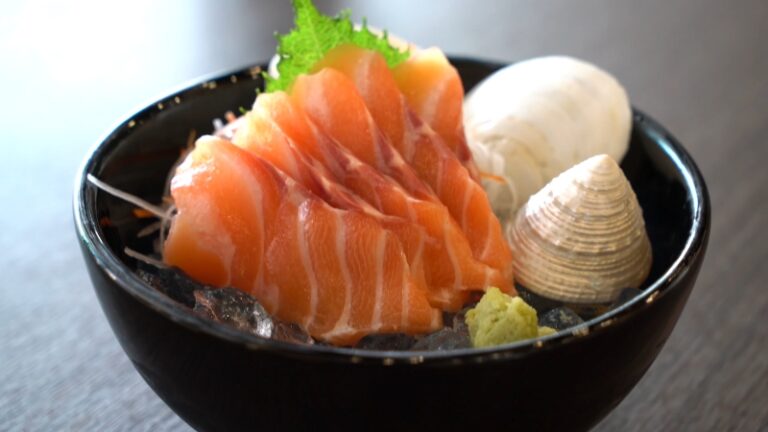Sashimi often earns praise for its clean flavors and refined simplicity, but it also brings real nutritional value to the table.
High-quality fish provides lean protein, omega-3 fats, vitamin D, selenium, iodine, and B vitamins, making it a food with benefits that go beyond taste. For many, it can fit neatly into a balanced diet and support key aspects of health.
At the same time, eating raw fish is not without concerns. Parasites, bacteria, and varying mercury levels make it important to pay attention to both the type of fish and the way it is handled.
With smart selection and proper safety measures, sashimi can offer its nutritional advantages while keeping risks in check.
Key Takeaways
What Sashimi Delivers Nutritionally?

Protein and Essential Fats
Sashimi offers complete protein with almost no carbohydrate. Salmon, tuna, and yellowtail typically provide about 20 to 24 grams of protein per 100 grams, based on standard nutrient datasets. Values fluctuate by cut and origin, yet the protein range remains robust across common species.
Omega-3 fats stand out. EPA and DHA contribute to heart protection and other outcomes. Guidance from the American Heart Association encourages two servings of fish per week with an emphasis on fatty species.
Numbers add clarity. Analyses show high DHA in certain tuna species and consistently strong EPA+DHA in salmon. Actual figures vary by species, feed, and season, so menu planning works best with credible nutrient tables.
Micronutrients Worth Noting
Sashimi can contribute vitamin D and B12 at meaningful levels, along with selenium, iodine, and niacin. Those nutrients support immune health, thyroid function, red blood cell formation, and cellular energy. FoodData Central remains a strong reference for specific numbers per species and cut.
Health Benefits Linked with Regular Fish Intake
Heart Health
Intake of EPA and DHA aligns with lower triglycerides in many adults and aids overall cardiovascular risk management within a balanced diet. Serving guidance sets the cooked portion at roughly 85 to 100 grams.
Brain and Eye Health Across the Life Course
DHA supports neural and retinal development. During pregnancy, several public health sources encourage a weekly target of 8 to 12 ounces of low-mercury seafood.
Raw fish falls outside that window due to microbial hazards. Fully cooked fish, canned options, or pasteurized seafood spreads can meet nutrient goals more safely during that period.
Main Risks Tied to Sashimi
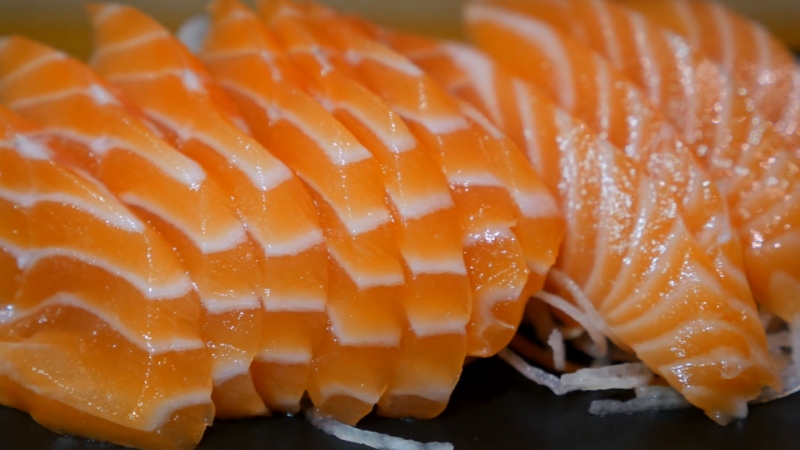
Parasites
Wild fish may host nematodes such as Anisakis. Freezing at very low temperatures for set durations kills parasites of concern for raw service. CDC lists three validated options:
- −20 °C (−4 °F) or lower for 7 days
- −35 °C (−31 °F) or lower until solid, then hold at −35 °C for 15 hours
- −35 °C until solid, then hold at −20 °C (−4 °F) for 24 hours
FDA hazard guidance explains that effectiveness depends on species, source region, and parasite type. Processors and restaurants use HACCP plans to manage controls and to document compliance.
Home freezers rarely reach those temperatures. Many units sit around −18 °C to 0 °C, which may not deliver reliable parasite destruction. Commercial freezing or verified “previously frozen for raw consumption” labels provide a safer path.
Bacteria and Viruses
Raw seafood can carry Listeria, Salmonella, and Vibrio species. CDC prevention pages highlight seasonal increases of Vibrio in warm coastal waters and note severe outcomes in high-risk hosts.
People with liver disease or immune compromise carry the highest risk from raw oysters and similar shellfish.
Mercury
Methylmercury accumulates in long-lived predatory fish. EFSA proposed a tolerable weekly intake of 1.3 micrograms per kilogram body weight for methylmercury.
JECFA guidance sets 1.6 micrograms per kilogram body weight per week. Those values inform country-level consumer charts and pregnancy limits.
FDA and EPA joint advice groups classify species by mercury level. Salmon, sardines, trout, and many shellfish sit in the Best Choices list for frequent meals.
Swordfish, shark, king mackerel, bigeye tuna, and marlin carry high mercury and should be avoided for pregnant adults and young children.
Who Should Skip Raw Sashimi
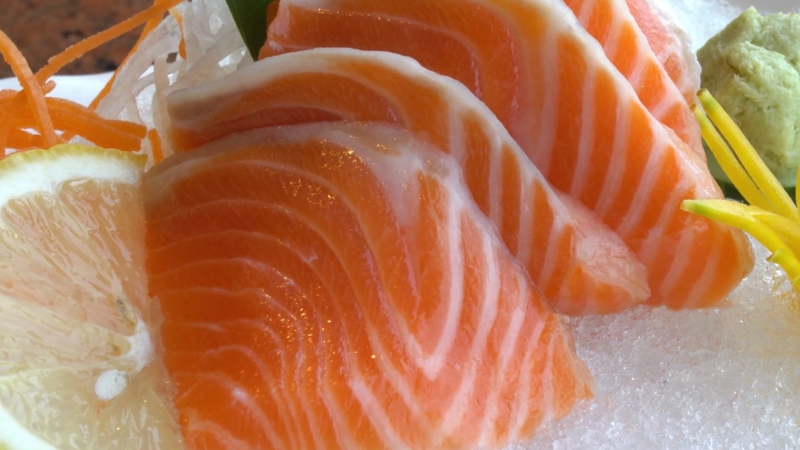
- Pregnant adults
- Infants and young children
- Older adults
- People with immune compromise
- People with liver disease or iron overload disorders
Pregnancy guidance from the NHS and related public pages supports fully cooked fish only. Cold-smoked or cured fish can carry Listeria risk unless heated until steaming hot.
Tuna also receives specific limits due to mercury.
Safer Order Guide for Sashimi Fans
View this post on Instagram
Vet the Venue with Pointed Checks
Look for:
- Cold chain discipline from dock to plate
- Clear sourcing notes on menus or boards
- Staff willing to answer specific questions about suppliers
- HACCP references and parasite-destruction records based on Food Code language for retail operations
Favor Lower-Mercury Species for Frequent Orders
- Salmon
- Trout
- Sardines
- Atlantic mackerel
- Farmed arctic char
Albacore and bigeye tuna push weekly mercury intake up. Bluefin also trends high. Occasional use can fit adult menus, while regular rotation lands better with salmon or trout. FDA consumer charts help plan frequency.
Skip Raw Shellfish when Risk Climbs
Warm-water months raise Vibrio risk. People with liver disease or immune compromise face severe illness from raw oysters and similar shellfish. Complete cooking removes that hazard.
What a Standard Portion Provides
@biohaoker Sashimi is a popular go-to for many — clean, tasty, and protein-packed. But how do the macros actually compare? 🍣 Table data is for 100g of each fish serving! Here are 4 of the most common types you’ll find on a sashimi platter: • Salmon • Tuna • Yellowtail • Swordfish And for the fatty cuts: • Salmon Belly • Fatty Tuna (Chutoro/Otoro) Here’s the breakdown: ✅ Highest Protein: Lean Tuna followed by Yellowtail ✅ Highest Fat: Fatty Tuna (Otoro) & Salmon Belly ✅ Lowest Calories: Lean Tuna & Yellowtail Personally, I go for Salmon (for the omega-3s) and Yellowtail (for the protein). But it really depends on your goal: ➡️ Want a lower-calorie meal? Stick with lean tuna or yellowtail ➡️ Trying to bulk up or add calories? Go for salmon belly or chutoro/otoro At the end of the day, I like a balance — and usually just order what I enjoy most: salmon and yellowtail. #health #Fitness #healthy #healthylifestyle #wellness #nutrition #SelfCare #longevity #fitnessmotivation #workout #healthyfood #fitspo #bluezone #guthealth #MentalHealth #fitlife #gym #antiaging #healthyhabits #holistichealth #singapore #sg #igsg #sgtiktok #coffee #healthfood #sashimi #fish ♬ original sound – Biohaoker
Typical Numbers per 100 G
Species
Calories
Protein
Fat
Carbs
Notes
Salmon, Atlantic, farmed, raw
~177 kcal
~20 g
~11 g
0 g
High EPA+DHA, plus vitamin D and selenium.
Tuna, bluefin, raw
~122 to 144 kcal
~23 g
~1.3 to 4.9 g
0 g
High DHA, higher mercury concern.
Yellowtail, raw
~124 to 146 kcal
~20 to 23 g
~4.5 to 5.2 g
0 g
Lean, solid protein choice.
Values shift with cut, origin, feed, and analytical method. USDA FoodData Central remains the best starting point for precise logging.
How to Balance Benefits and Risks
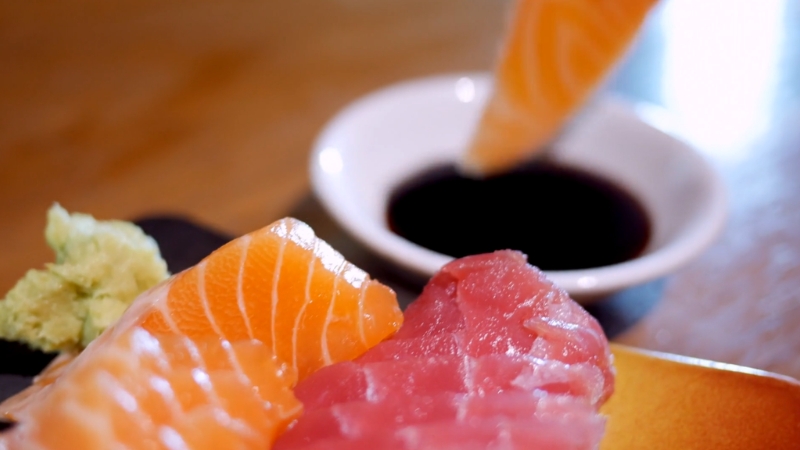
Order Smart
- Pick salmon or trout for frequent sashimi nights
- Rotate species to diversify nutrients
- Limit higher-mercury tuna varieties
- Add seaweed salad or edamame for fiber and minerals
- Avoid raw shellfish during warm-water Vibrio season or whenever public alerts appear
Ask Clear Questions at The Counter
- Was the fish deep-frozen to the FDA time–temperature targets for parasite control
- Which supplier delivered today’s lot
- How long did fillets stay on site before service
- Does the venue maintain parasite-destruction records per Food Code guidance
Handle Carefully at Home
- Buy only fish sold for raw use, then confirm freezing specs on the label or with the seller
- Keep the cold chain intact with ice packs during transport
- Store at or below 4 °C in the refrigerator
- Use a separate board and knife for raw seafood
- Cook to a 63 °C core temperature if any doubt remains about safety, since heat eliminates parasites and common pathogens
Special Notes for Parents and Pregnant Adults
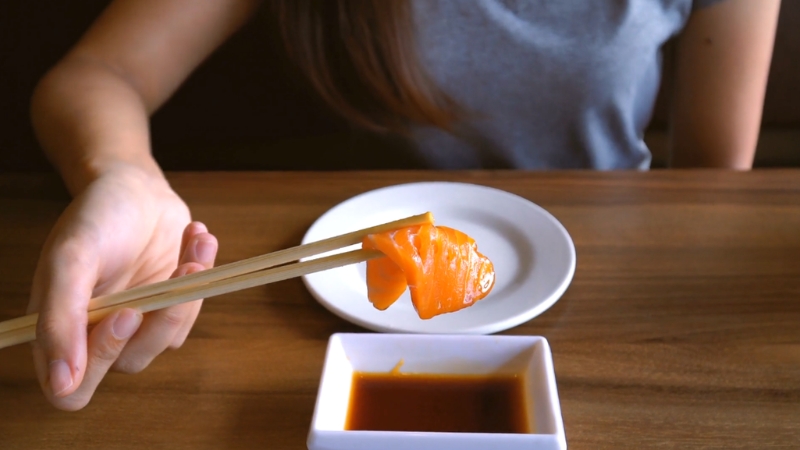
Public health groups encourage seafood in pregnancy for DHA and iodine, with a weekly target of 8 to 12 ounces of low-mercury fish. Raw fish falls outside safe practice due to Listeria and other pathogens.
Fully cooked fish, canned options, or pasteurized spreads create a safer route to reach nutrient goals. NHS pages also outline tuna limits and flag cold-smoked fish risks unless heated thoroughly.
A Practical One-Week Template
Goal: Two seafood meals in a week for general adults, unless a clinician recommends a different plan.
Plan:
- Day 1 – Salmon sashimi set. Add rice for energy. Add seaweed salad for minerals. Avoid raw shellfish.
- Day 3 – Trout or arctic char sashimi set. Keep soy sauce modest to manage sodium. Add edamame for fiber and plant protein.
- Day 6 – Cooked seafood night. Broiled salmon or trout with greens and a citrus salad.
Swap list: Albacore tuna as an occasional treat. Sardines or mackerel as cooked dishes for omega-3 density. Use the FDA/EPA consumer chart to plan frequency by species.
Clear Do-Not-Eat List for Raw Service
- Pregnancy
- Immune compromise
- Advanced liver disease
- Infants and toddlers
- Recent severe GI illness or recent antibiotic course with concerns about gut barrier issues
Frequently Asked Questions
Bottom Line
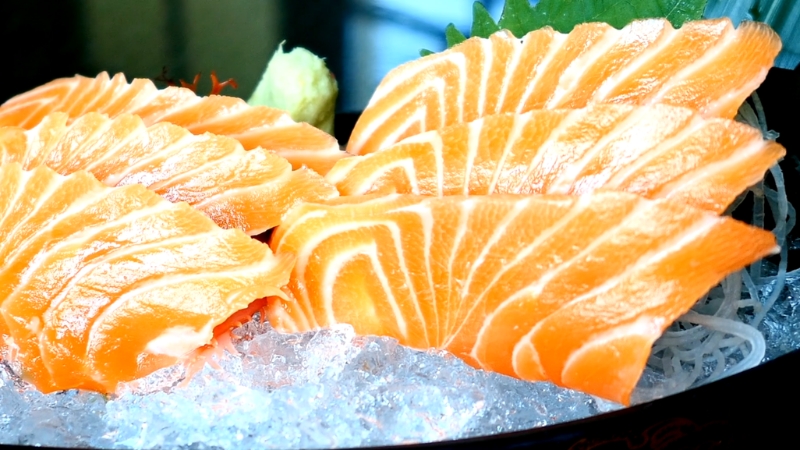
Sashimi can live inside a health-forward diet when choices favor lower-mercury fish and when safety protocols hold firm from supplier to plate. Fatty fish support heart and brain goals due to EPA and DHA.
Raw service carries preventable hazards that careful freezing and strong hygiene can reduce, although not erase. Pick salmon, trout, sardines, or arctic char for frequent orders.
Keep high-mercury tuna limited. Avoid raw shellfish if personal risk runs high. Coconut crab, though eaten in some regions, also raises safety concerns and should be treated with the same caution as shellfish.
Choose fully cooked seafood during pregnancy and early childhood. Use trusted public resources to build a plan and ask direct questions before ordering.

